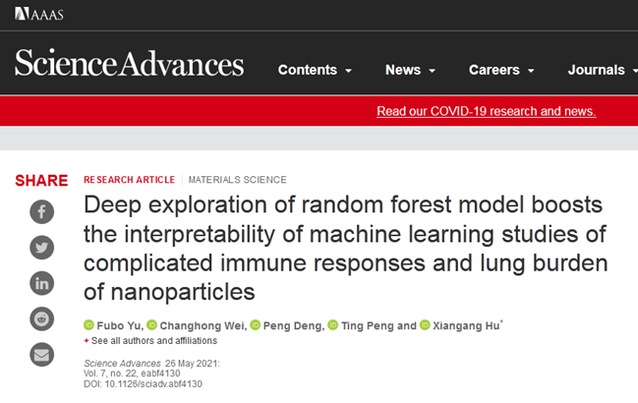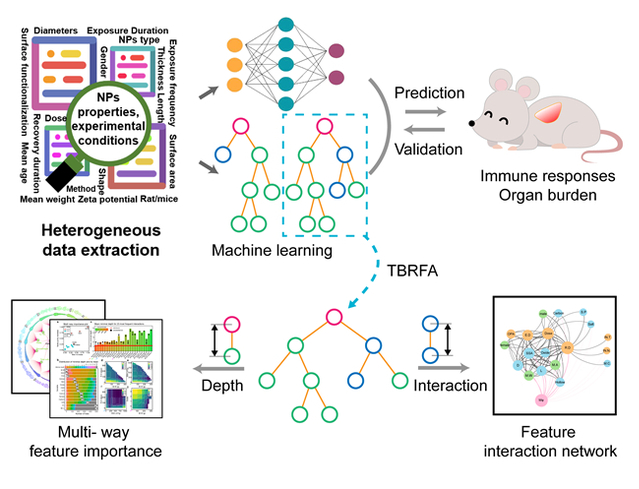A New Support for Accurate Prediction of Environmental and Biological Effects of Nanomaterials

Recently, Professor Hu Xiangang’s team from the School of Environmental Science and Engineering of Nankai University has made breakthroughs in expanding machine learning algorithms to predict the biological effects of nanomaterials; they explored the mechanism of biological effects of nanomaterials by enhancing the interpretability of machine learning, thus providing a fresh researching angle to solve this issue. On May 26, a paper introducing the scientific research results Deep exploration of random forest model boosts the interpretability of machine learning studies of complicated immune responses and lung burden of nanoparticles was published in the internationally renowned journal Science Advances.
At present, machine learning models have been widely used in the prediction of environmental biological effects of nanomaterials. However, due to the interpretability of machine learning, it is still very difficult to use the relative models to reveal the mechanisms of complicated nanotoxicology.
Based on the previous work, the team of Professor Hu created a nanomaterial-biological effect database, constructed a nanomaterial-biological effect regression model, and proposed a tree-based random forest feature importance and feature network interaction analysis framework (TBRFA).

Figure 1. Schematic diagram of TBRFA framework
The TBRFA analysis framework includes importance analysis and feature interaction network analysis. The former uses multiple importance indicators to balance the prejudice brought by the traditional single indicator and recognizes that recovery time of exposure, material specific surface area and material size are important factors that affect the biological effects and induce nanomaterials. By analyzing the tree structure of the random forest, the latter calculates the interaction coefficient between the two features, and identifies the roles of the specific surface area and surface charge, specific surface area and length, length and diameter of the material in inducing biological effects. They mutually restrained and influenced each other.
Professor Hu Xiangang said that this research can direct the research and development of environmental friendly nanomaterials, and will provide new strategies for the ecological and environmental safety assessment of nanomaterials. In addition, the machine learning algorithm is not only suitable for the analysis of the environmental effects of nanomaterials, but also is appliable in the prediction and evaluation of environmental biological effects, including heavy metal and organic pollution.
Link to the paper: https://advances.sciencemag.org/content/7/22/eabf4130
(Reported by Kun Fu, translated By Qi Zhu, edited by Davide Francolino and JianjingYun)









